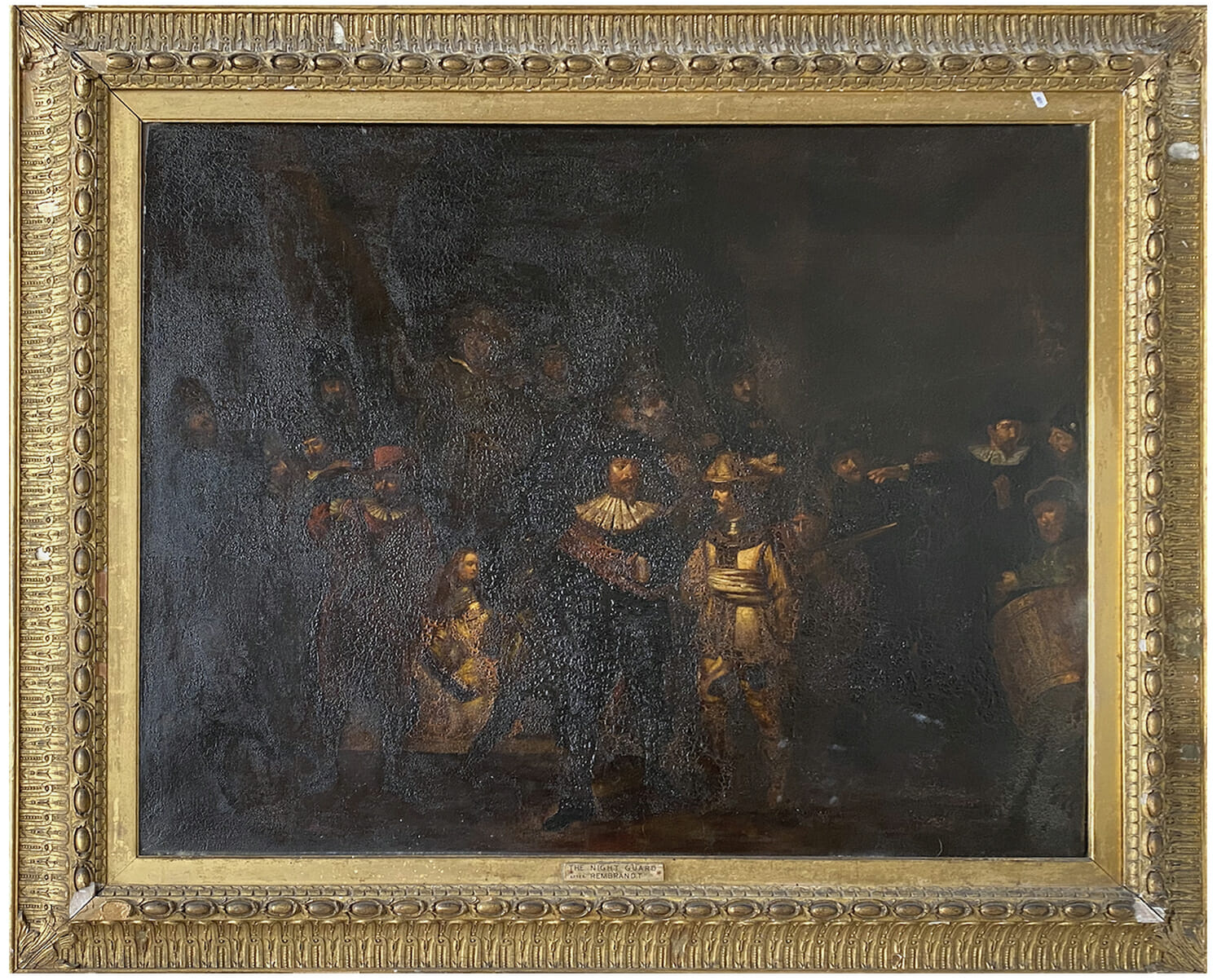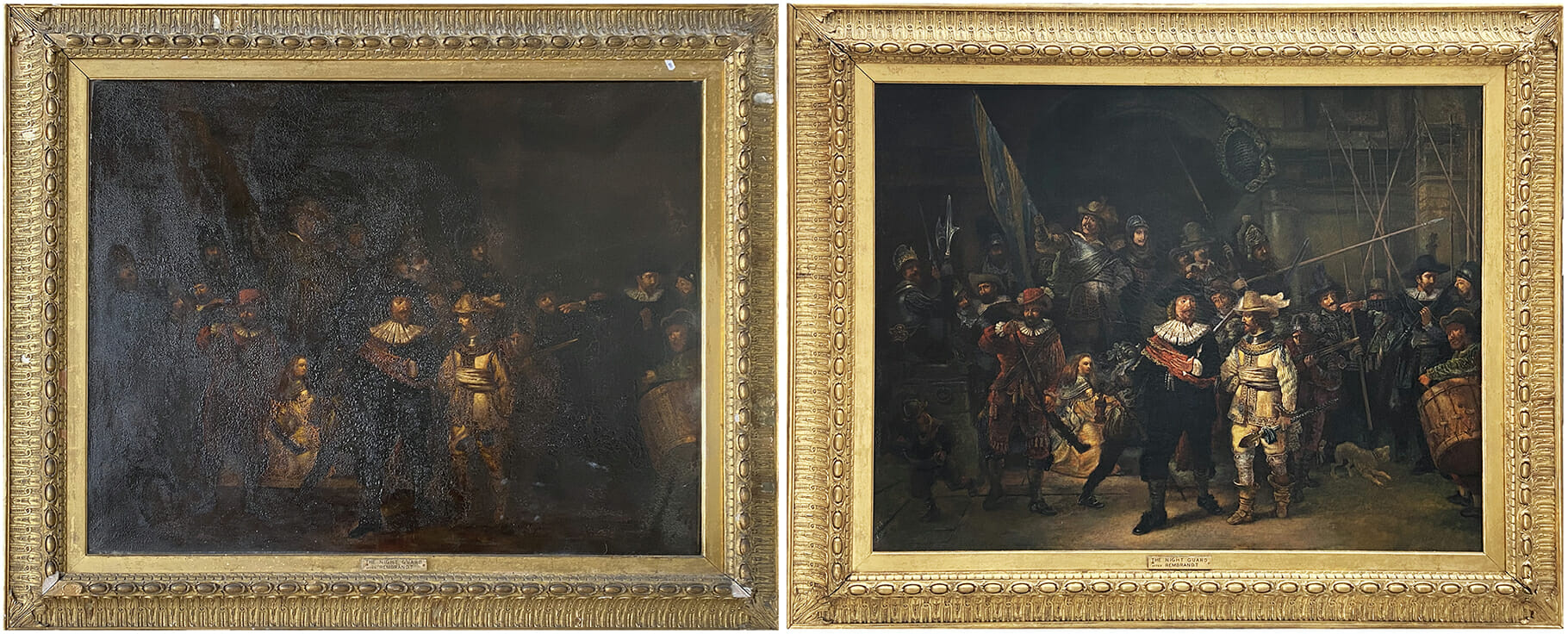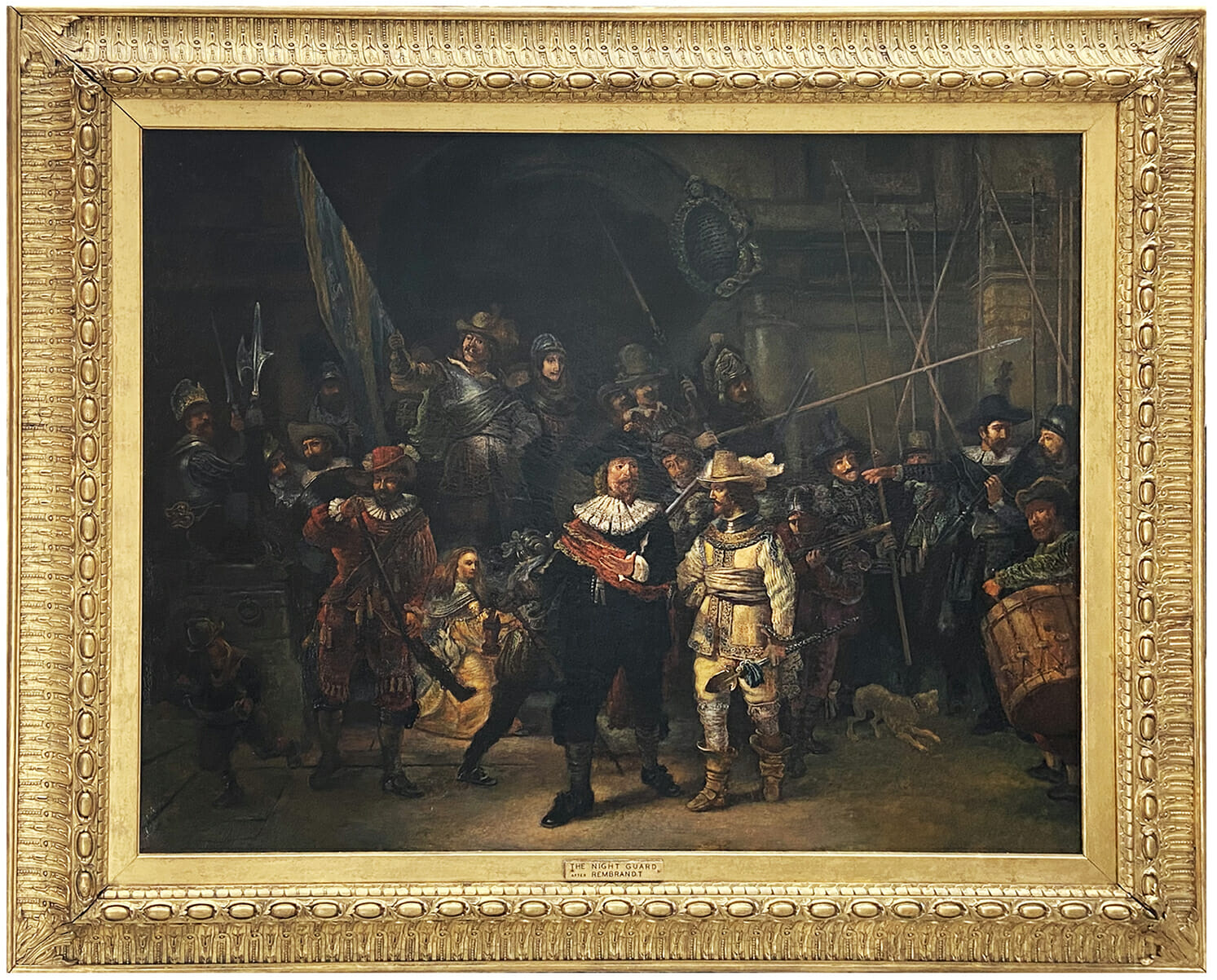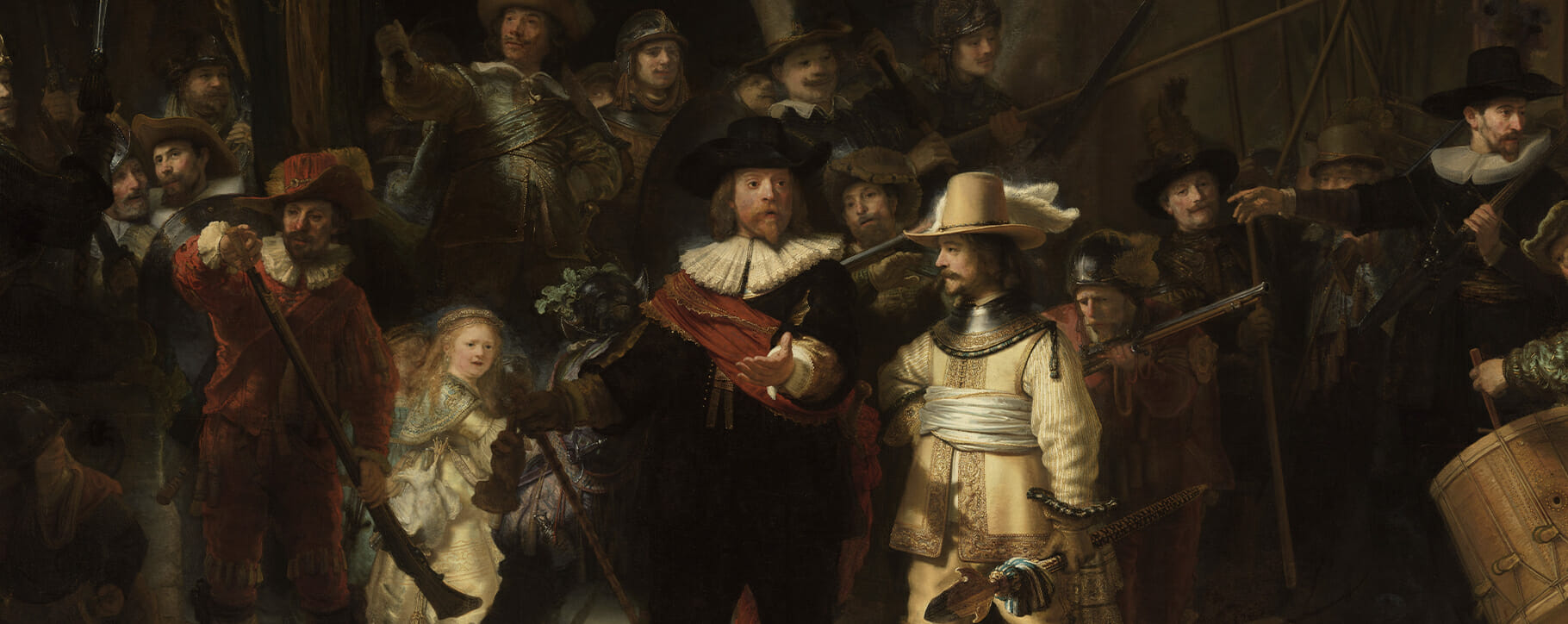Many of the paintings that we receive in our studio are copies of some of the greatest paintings in human history. This was very much the case for a recent conservation project that would reveal hidden figures in a darkened copy of Rembrandt’s De Nachtwacht – also known as The Nightwatch or it’s much longer, official title Militia Company of District II under the Command of Captain Frans Banninck Cocq.
 Above: a detail from the original Night Watch by Rembrandt van Rijn, 1642
Above: a detail from the original Night Watch by Rembrandt van Rijn, 1642
The painting was suffering from a typical issue found on paintings that have a bold use of shadow in their composition, as very dark pigments (especially from the 18th and 19th centuries) would often include bitumen, a coal tar substance that can easily become distorted and scaly over time. The overuse of bitumen to achieve Rembrandt’s ‘tenebrism’ style had eventually distorted the view of the Night Watch figures. Under a darkened varnish layer and surface contamination, much of the scene was hidden or hard to make-out. These issues would have become worse with time, increasingly disturbing the painting to the point of it no longer appearing as the artist would have intended.
Below is the oil painting and frame as they appeared before restoration.

Our conservator stepped in to protect and preserve the painting, preventing further loss of detail and reviving the original tones of the work. Our frame experts also revived its original gilt frame with a historically accurate finish. This article will investigate the themes of the original masterpiece and the ways our professional conservators were able to successfully revive a darkened artwork.
Why is The Night Watch famous?
The Night Watch is Rembrandt van Rijn’s most recognisable masterpiece and comes shortly behind the Mona Lisa as one of the most famous paintings in the world. This is partly due to the size of the work (12 x 14.5 ft) and the dynamic use of light and dark in the composition. It is also a unique group portrait, with a sense of movement and command unlike traditional military portraits of its time. The Night Watch is also one of the most impressive and large-scale artworks to have been produced during Dutch Golden Age, one of the most influential eras in art history.
What is The Night Watch about?
Commissioned by the central figure of the piece, Captain Banninck Cocq, the artwork was intended to be a military portrait of himself and his men – members of the civic militia guards. It was originally intended to be displayed in the Musketeers’ Meeting Hall, possibly due to the arrival in Amsterdam of Marie de Medici in 1638. Unlike a static group portrait, Rembrandt depicts the captain leading his men out into the city streets. Besides the leaders, another prominent figure is that of a young girl who acts as an allegory for the arquebusiers through a careful use of symbolism.
The dark tone of The Night Watch was originally due to darkened varnish coating the scene, giving the artwork the name it is best known for. Underneath the dark surface, the painting was not in fact a night scene and although there is great use of light and shadow it is clear that the two central figures are stepping out into a natural morning or evening light. The thick and dark varnish however proved useful as it protected the original painting from malicious knife attacks and damage in the past. This dark varnish has now been removed to reveal much brighter tones and the painting is currently part of a major conservation project at The Rijksmuseum.
What causes a scaly oil painting surface?
Bitumen paint was used frequently throughout the 18th and 19th centuries and is usually responsible for the raised, blistered and scale-like appearance of antique oil paintings. This is caused by a chemical reaction over time and the ageing process. Bitumen pigments may also be referred to as asphaltum and be present in the compositions known as Mummy Brown (including pigment created from ground Egyptian mummies) and Antwerp Brown.
 Above: a close-up of the bitumen scales seen on affected paintings
Above: a close-up of the bitumen scales seen on affected paintings
Bitumen is made from coal tar and may be included in areas of black or umber pigments, especially in pieces with large areas of shadow. Bituminous pigments may never completely dry and can leave an extremely uneven surface that is said to resemble crocodile skin.
Restoring a copy of The Night Watch
Like the original masterpiece, this copy of The Night Watch was also hidden under a dark surface caused by age and atmospheric contamination – most likely historic fireplace smoke. The surface had also become bumpy and scaled due to the use of bitumen, completely distorting the scene and many of the figures.
Upon assessment, our conservators were confident that this disturbance could be reduced. However, the conservation of the painting was going to be a long and complex task.

Much of the original appearance had changed, disturbed by the bitumen scaling across the surface. To reduce the pitting and further loss of original features, the surface was stabilised. Our conservator completed his retouching of the colours as sensitively as possible in order to maintain the historic and artistic integrity of the painting.

Above is the painting and frame following restoration by our conservator.
Alongside the painting conservation, the gilt frame was also revived by our experts. This stabilised the decoration whilst creating new mouldings for any areas that had become broken or lost. Gold leaf was applied with a tone that suited the antique nature of the piece. Securing the frame would ensure that the painting would be returning to a safe display environment with no fear of falling from height or abrasions.
How can we help?
If you have a painting that has been affected by bitumen pigments or dark discolouration, please speak to our friendly team today for a quote and further advice.
To make contact please email us via [email protected] or call 0207 112 7576

 Above: a detail from the original Night Watch by Rembrandt van Rijn, 1642
Above: a detail from the original Night Watch by Rembrandt van Rijn, 1642
 Above: a close-up of the bitumen scales seen on affected paintings
Above: a close-up of the bitumen scales seen on affected paintings 




